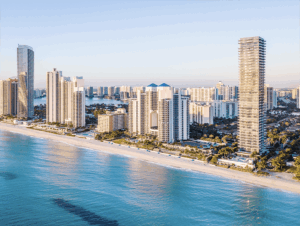The commercial real estate landscape is experiencing a notable shift as investors increasingly target established gateway markets and high-growth Sun Belt cities. This strategic pivot reflects a maturing understanding of market fundamentals following years of uncertainty and elevated inflation.
Miami has emerged as a particularly compelling destination, securing the second position among preferred investment markets for consecutive years. This ranking underscores the city’s growing appeal to both institutional and private capital sources. The sustained interest demonstrates investor confidence in the market’s underlying strength and long-term prospects.
Dallas maintains its leadership position as the top investment market for the fourth consecutive year, while traditional powerhouses like Boston, Washington D.C., and San Francisco have regained favor among investors. This renewed interest in established markets suggests a flight to quality as investors seek stability amid ongoing economic transitions.
Capital Deployment Accelerates
Market dynamics indicate a significant acceleration in capital deployment, with approximately 70% of investors planning increased asset acquisitions throughout 2025. This aggressive expansion reflects both improved pricing conditions and strengthening real estate fundamentals across key sectors.
The investment recovery appears robust, with three-quarters of market participants anticipating a rebound in their own activity by mid-year. This optimism extends beyond individual portfolios to broader market sentiment, suggesting a coordinated recovery across the sector.
Investor strategy preferences have notably shifted toward value-add and core-plus approaches, with two-thirds of participants favoring these methodologies. This strategic evolution indicates sophisticated risk management as investors seek enhanced returns while maintaining reasonable risk profiles during the economic expansion phase.
South Florida Performance Exceeds Expectations
Regional performance data reveals remarkable strength in South Florida’s commercial market, with transaction volumes reaching $5.6 billion in the first half of 2025. This represents a substantial 10% increase compared to the previous year, demonstrating sustained market momentum.
The office sector has experienced particularly dramatic growth, with transactions doubling to $1.4 billion—a remarkable 110% increase. This surge contradicts broader industry concerns about office space demand and suggests market-specific factors driving renewed interest in commercial office properties.
Multifamily assets continue their steady performance with $2 billion in transactions, reflecting a 5% increase. This growth trajectory aligns with broader demographic trends and sustained demand for rental housing in desirable urban locations.
Broward County emerged as a standout performer with a 47% increase in sales volume, reaching $2.3 billion. Major transactions, including significant office building acquisitions on Las Olas Boulevard, demonstrate institutional confidence in the region’s commercial prospects.
Sectoral Evolution and Emerging Trends
The transformation of Miami’s urban landscape reflects broader industry adaptations to changing user preferences. Mixed-use developments combining residential, commercial, and entertainment elements are reshaping neighborhoods like Brickell and Wynwood, creating integrated lifestyle destinations that appeal to modern businesses and consumers.
Industrial and logistics properties maintain their position as preferred investments, driven by e-commerce expansion and Miami’s strategic geographic advantages. The city’s proximity to major port facilities and direct connections to Latin American markets enhance its appeal as a logistics hub in an increasingly globalized economy.
Office space evolution continues as the hybrid work model influences design and functionality requirements. Properties incorporating advanced technology, sustainable design elements, and flexible workspace configurations are commanding premium valuations and attracting quality tenants.
Sustainability considerations have transitioned from optional enhancements to core market requirements. Properties featuring LEED certifications, renewable energy systems, and environmentally conscious designs consistently demonstrate higher occupancy rates and stronger long-term market viability.
Market Challenges and Risk Factors
Despite positive momentum, significant challenges persist across the commercial real estate sector. Interest rate volatility remains the primary concern, with elevated long-term rates and uncertain monetary policy trajectories creating ongoing uncertainty for investment planning and project financing.
Operating cost pressures continue to impact property performance, as owners navigate increased expenses while maintaining competitive rental rates. This dynamic particularly affects older properties lacking modern efficiency features and sustainable design elements.
Climate change considerations are becoming increasingly critical for long-term investment decisions. Properties in areas susceptible to natural disasters face elevated insurance costs and potential value impairment, requiring sophisticated risk assessment and mitigation strategies.
Strategic Outlook and Investment Implications
The current market environment presents a unique opportunity set for well-positioned investors and developers. Favorable pricing conditions, combined with improving fundamentals, create potential for significant returns as the recovery gains momentum.
Institutional capital continues flowing into high-quality assets, particularly in multifamily and industrial sectors. This institutional interest provides market stability and validates long-term growth prospects for well-selected properties in strategic locations.
The convergence of demographic trends, technological advancement, and changing user preferences suggests sustained demand for modern, efficient commercial properties. Investors focusing on assets meeting these evolving requirements are likely to benefit from both income generation and capital appreciation as the market recovery progresses.
Market participants positioning themselves strategically during this transition period may capture first-mover advantages as broader economic conditions continue stabilizing and commercial real estate fundamentals strengthen across key metropolitan areas.
Richard Tayar is the founder of Columbus International, an international real estate firm bridging markets between the United States and Italy, with focus on New York, Milan, Florence, and Miami.



